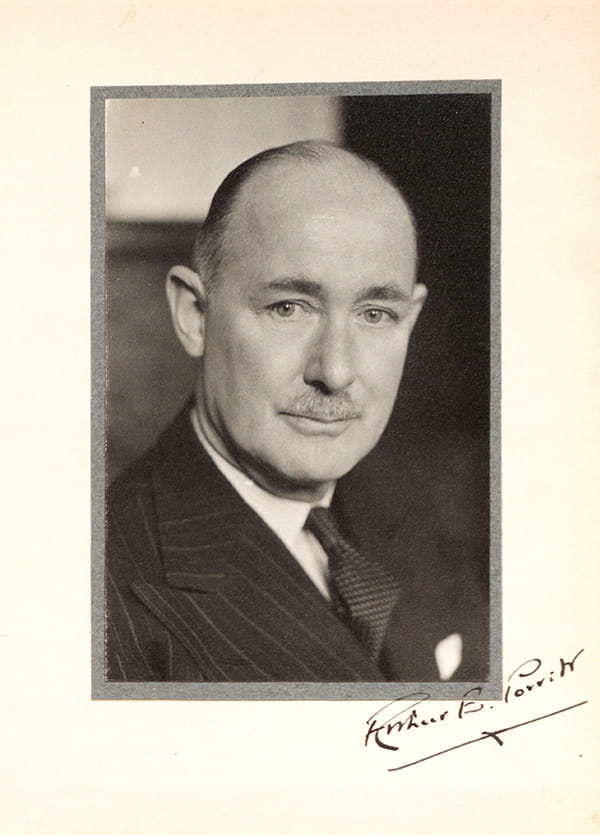Arthur Porritt - an Olympian president
26 Jul 2024
Fahema Begum
This year marks one hundred years since the 1924 Olympics. At those Games, two outstanding medical students and a young doctor won medals – Hyla (‘Henry’) Stallard (1901-1973), Arthur Porritt (1900-1994) and Theodore Howard Somervell (1890-1975). All three went on to become distinguished and pioneering surgeons in their own specialties.
Arthur Espie Porritt (10 Aug 1900 – 1 Jan 1994) was no stranger to sports: from his early school days in New Zealand, Porritt had been very able in swimming, riding, rugby and, most notably, in athletics. He secured a Rhodes Scholarship to study at Oxford in 1923, where he not only distinguished himself academically, but unsurprisingly also on the sports field.
Above: An image of Porritt in 1925 (RCS-PHO/1/2/5).
He became a member of the Oxford University athletics team and later its President (1925-26). His sprint record of 9.9 seconds for the 100m in the 1925 Oxford vs. Cambridge race remained unbroken for thirty-seven years. He also achieved records in the 100 and 220 metres hurdles at Oxford.
Porritt reached the highest international level, when he competed in the 1924 Olympic Games in Paris, representing New Zealand, and won bronze medal in the 100m sprint. After three heats he reached the final, running against some of the world’s finest sprinters, Harold Abrahams and Jackson Scholz, despite not being properly coached. This event was subsequently depicted in the 1981 award-winning film Chariots of Fire, on which Porritt acted as athletic and historical advisor.
His success continued: Porritt went on to captain the New Zealand athletics team at the Amsterdam Olympics in 1928; to manage the team at the 1934 British Empire Games (now the Commonwealth Games) in London, as well as manage the team for the 1936 Olympics in Berlin. Unfortunately, knee trouble meant that he was forced to give up competitive running in 1928 but he continued his interest in the sport by serving on the International Olympic Committee from 1934 to 1967, in addition to becoming the Chairman (1945-1966) and Vice-President of the British Empire and Commonwealth Games.
Alongside his sporting career, he was also a prominent surgeon. He started his professional career at St Mary's Hospital, London, as a House Surgeon, then later as Surgical Registrar. He qualified as MRCS in 1928, becoming FRCS in 1930. In 1936, he became Consultant Surgeon and held this post until his retirement in 1965.
Above: Photograph of Porritt from the Council Club Photograph Album, RCS-GOV/2/11/3.
From 1952 he served as Sergeant-Surgeon to King George VI, and then to Queen Elizabeth II. From 1867 to 1972 he was the 11th governor-general of New Zealand. At the Royal College of Surgeons of England, he served on the council from 1950 – 1966 and was president from 1960-1963. He was also a member and vice-chairman of the trustees of the Hunterian Museum until his death.
Above: Museum staff placing the first specimens in the new museum in June 1960 (RCS-PH/00110) - Jessie Dobson, Curator of the Hunterian Museum from 1954-1971, is pictured on the left, and Porritt is second from right.
In a series of three blog posts which will be published on successive Fridays during the Paris games, we chart the achievements of surgeons who have participated in the Olympics. Read next about Hyla Stallard who won a bronze medal in the 800m race at the Paris Olympics in 1924, and then Howard Somervell who was awarded one of the first Olympic gold medals for alpinism (or mountaineering) in 1924.
Fahema Begum, Assistant Archivist
Originally published on the Royal College of Surgeons of England Library blog: “Sporting Surgeons” (7 October 2016).




